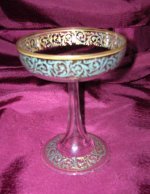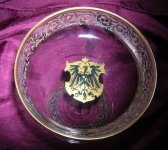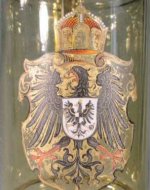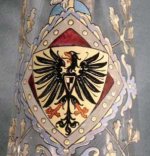R
Renee S.
Guest
I have had this challis? For probably 15 years now. I bought it from my
Brother who bought it overseas. It is lead crystal, gold leaf over enamel, and gold inlay. He had it appraised at a store here that sells collectables. They appraised it at $1500. and offered him $500. for it. I told him not to take it. That he needed to find out whose family crest it was. He didn't want to do the work, so I bought it. I searched for a while, and got no where. I can only guess the bird is an eagle. I suspect Austrian. I also think it could be Prussian. I just don't know. Does any one have a clue.
Thank You Kindly
Naycat
Brother who bought it overseas. It is lead crystal, gold leaf over enamel, and gold inlay. He had it appraised at a store here that sells collectables. They appraised it at $1500. and offered him $500. for it. I told him not to take it. That he needed to find out whose family crest it was. He didn't want to do the work, so I bought it. I searched for a while, and got no where. I can only guess the bird is an eagle. I suspect Austrian. I also think it could be Prussian. I just don't know. Does any one have a clue.
Thank You Kindly
Naycat




 ?)...and what country?.....that would help in your search....this site listed below can assist you in identification....
?)...and what country?.....that would help in your search....this site listed below can assist you in identification....


 I thought German, but not good at these things. Good luck on your venture, and keep us informed.
I thought German, but not good at these things. Good luck on your venture, and keep us informed.

